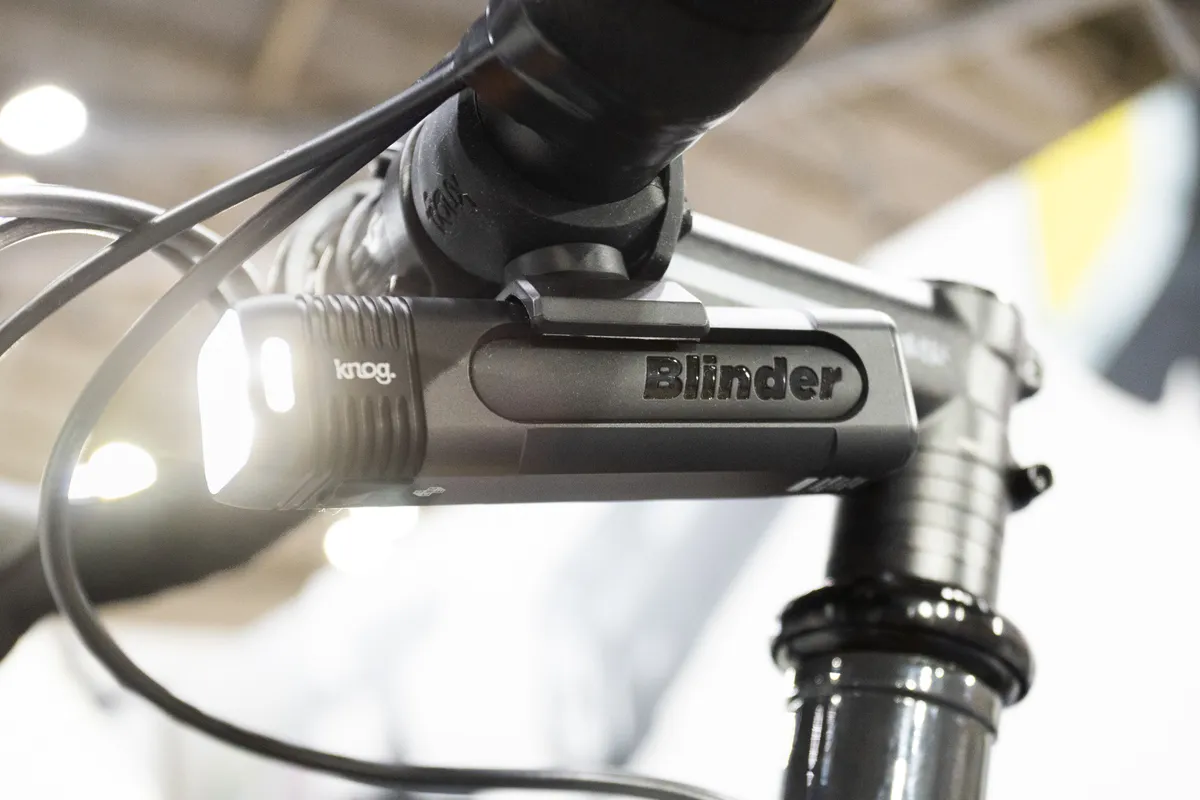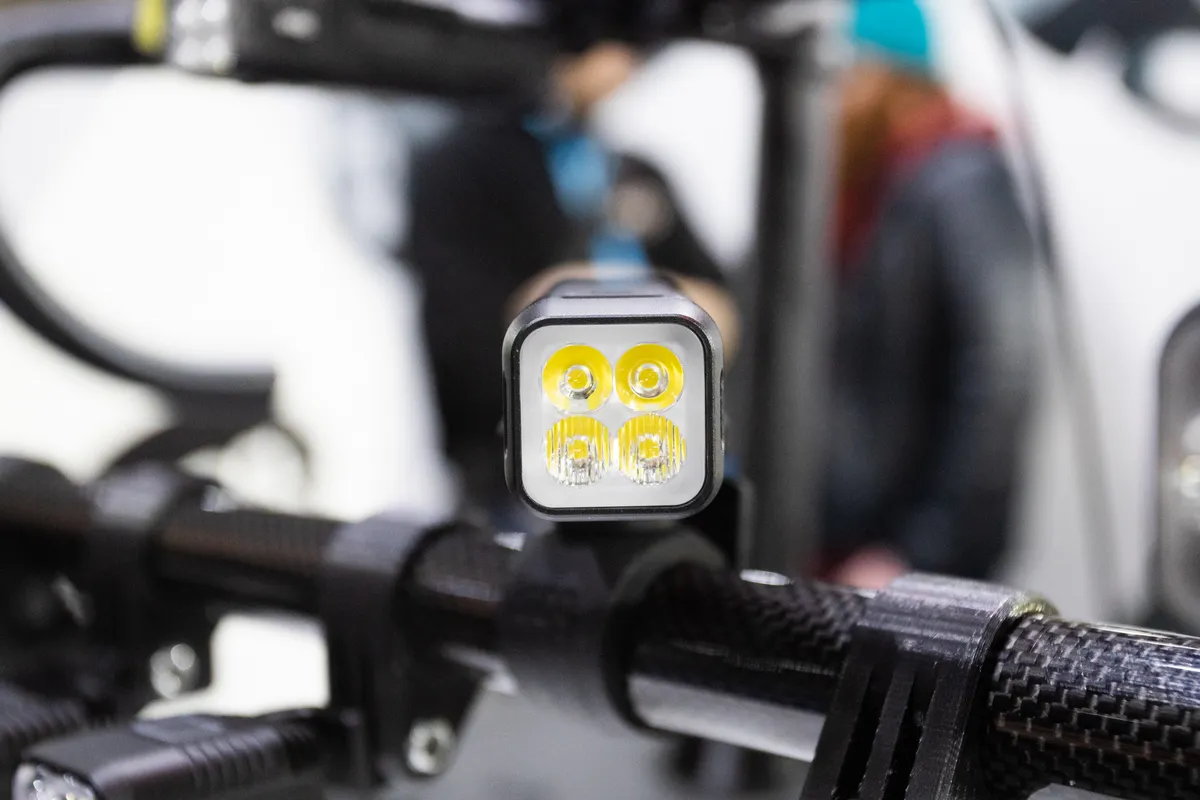Knog's new Blinder bike lights use batteries similar to Tesla's 21700 batteries for a claimed increase in run time. The new Blinder lights replace the brand's range of PWR products.
Speaking at iceBike* North, CEO Hugo Davidson says Knog conducted competitor analysis during Covid to develop the products, settling on a “lumen for dollar” approach with its new bike lights.
The Blinder lights have an aluminium casing, which clips into a low-profile U-shaped mount. All lights have a USB-C charging port.
The new lights will be available initially as standalone all-in-one units. Lights with external batteries for mountain biking, as well as electric bike headlights, will follow later in the year.
Tesla battery

Every light in the revamped range uses batteries that are the same size as Tesla's 21700 lithium battery.
The batteries used by Knog have all the same benefits as Tesla's 21700 battery, according to the brand.
Knog says run time is the primary concern of most consumers, and the Blinder lights will last 35 to 40 per cent longer than other comparable bike lights.
The standalone lights are available in 600-, 900- and 1,300-lumen versions. Davidson says the 900-lumen light has a maximum run time of two hours on full beam.
Davidson says accommodating the moderately larger battery is a negligible trade-off versus the improved run time of the lights.
Davidson says Knog is the first brand he's aware of to use the battery in bike lights. He imagines more will adopt the battery in future for its increased capacity.
Pricing starts at £59.95 for the 600-lumen light and rises to £99.95 for the 1,300-lumen light. International pricing is to be confirmed.
Beam pattern

The Blinder lights use a combination of LEDs for a direct and wider beam pattern.
Two LEDs provide a projected beam to light the road or trail immediately in your path, while two other LEDs create a bloom effect to illuminate your wider vision.
StVZO versions of the lights will be sold in Germany.
StVZO lights have grown in popularity beyond Germany and are even specced on bikes such as the Cannondale Synapse with its integrated SmartSense system.
Davidson says Knog may make the StVZO-compliant lights available in other territories.
Two mounts

The Blinder lights have an aluminium body, which clips into one of two mounts.
The first mount has a rubberised band, which can wrap around a handlebar for easy attachment and removal.
One edge of the U-shaped mount can be pulled easily to remove the light.
The second mount can be used in tandem with an out-front bike computer mount. While it looks similar to the first mount, it has a cam lock to minimise the chance of the light coming loose.
Davidson says the mount has been tested over cobbles.
No cable included

The Knog Blinder lights charge via a USB-C port. This makes them compliant with EU regulations, which require all new devices such as mobile phones, tablets and bike lights sold in the EU to have a USB-C charging port by the end of 2024.
The lights won’t ship with cables, instead relying on users already having a USB-C cable.
Davidson praises the standardisation of cables and charging ports on environmental grounds.
“I don’t see any reason why we should screw up the environment any more,” he says.
Integrated lights
There will be versions of the Blinder lights that are compatible with external battery packs in the early autumn.
These lights will be available with 1,300, 1,800 or 23,00 lumens.
They could be used with mounted battery packs for mountain bike night riding, but they can also be plugged into an electric bike’s battery.

